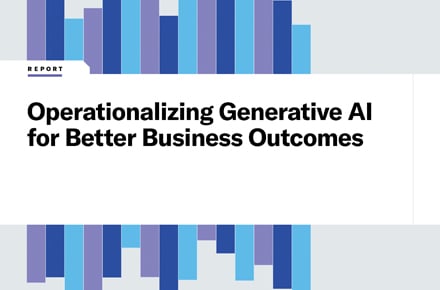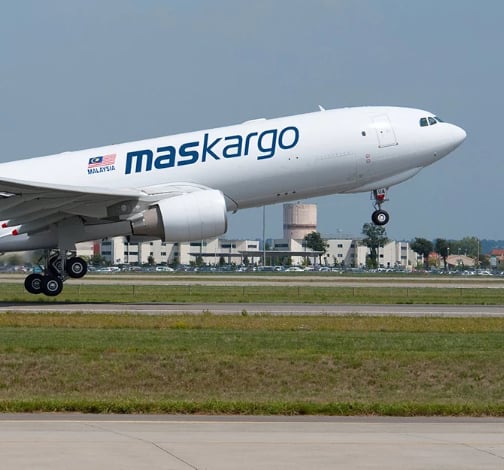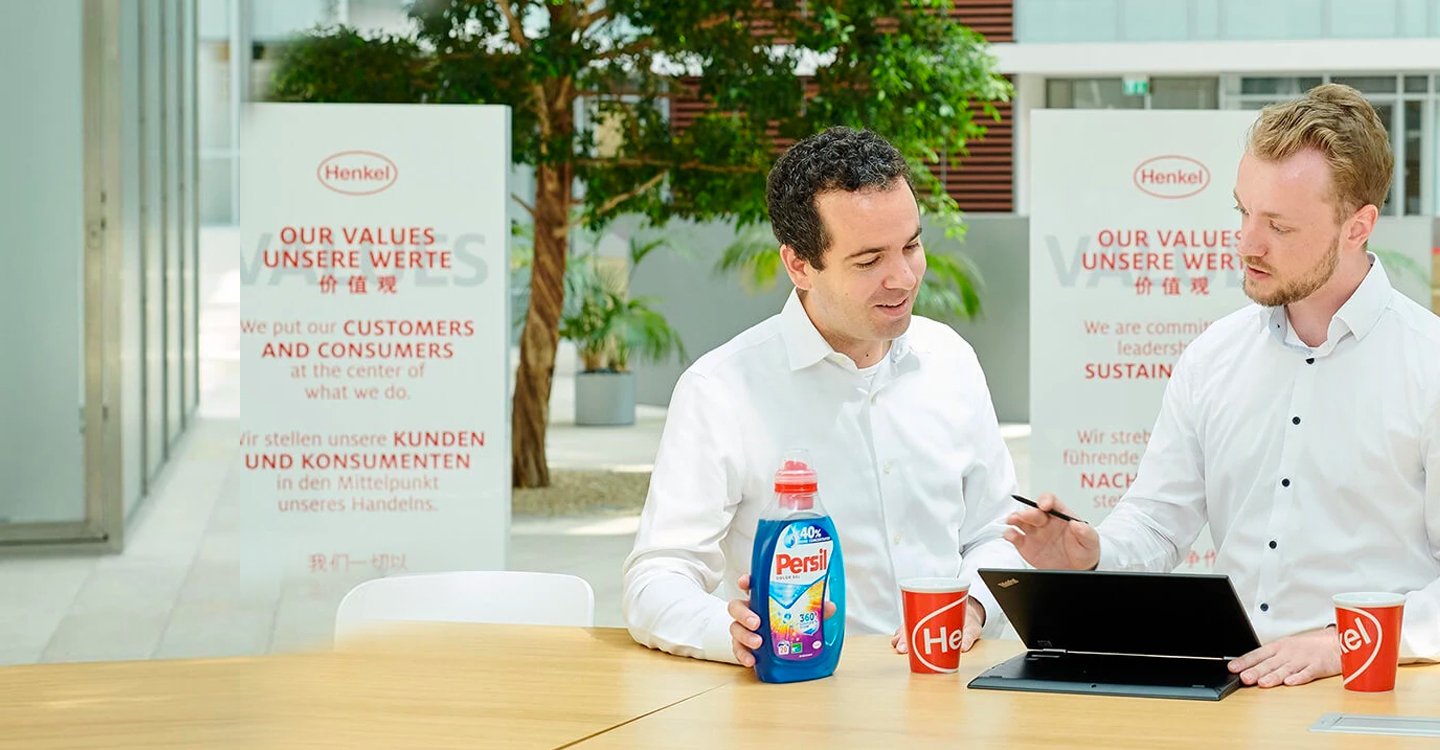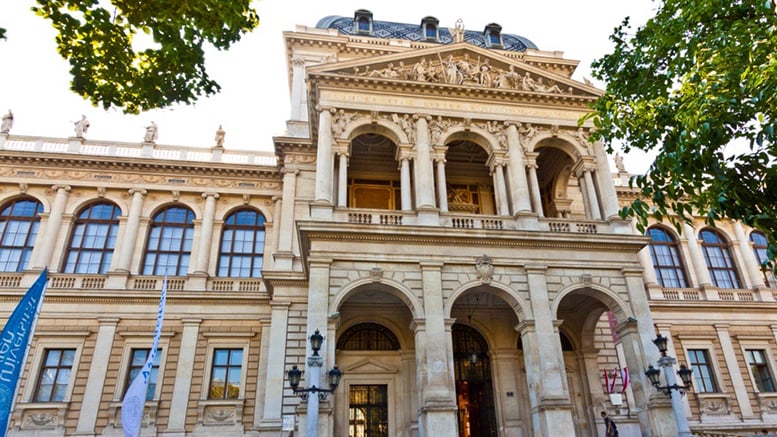Weston Morris :
Welcome to the Digital Workplace Deep Dive. I'm your host, Weston Morris. Have you ever had this experience? You've got an important presentation to give, so you decide, yeah, you're gonna head over to the conference room a few minutes early and make sure that everything's connected properly. And to your horror, everything's a mess. Wires are unplugged. You aren't sure how to get the smart whiteboard connected to your teams or your Zoom session. You're not even sure. Are we using Zoom or Teams? Will remote attendees be able to hear you? Will they be able to see you? You remember the last time you went into this conference room, there was a horrible echo every time Tom joined in from his home office. And it's even more scary when you walk into a new conference room at a facility that you've never been to before, that first few minutes of panic. It's just absolute terror, is it not? Well, you will be very happy to know that my two guests today are very familiar with that problem and they have a very delightful set of solutions that I think you'll be very interested in. I'd like to introduce Stacy Harder and Rich Owen, who together lead the solution design of all of our Unisys offerings relating to any form of communication or collaboration in the digital workplace. Welcome Stacy and Rich.
Stacy Harder:
Thanks Weston. It's great to be here.
Rich Owen:
That's right. Thanks very much Weston for this opportunity.
Weston Morris :
Let's get started. I think this first question, I'm just gonna go a little deeper in this, I kind of set the stage here with a challenge that we can pretty much all relate to coming into a meeting room and it affects your ability to communicate and collaborate. What are some other challenges that you're seeing as you've worked with various customers?
Stacy Harder:
Well, Weston, I think you pretty much summed it up in the beginning of this little podcast here. It's, you have people that are just used to what they have at home. So when they walk into the office, they're either expecting the same setup and it's not. It could be several different variations of different manufacturing, you know, components or it's outdated and they haven't seen it in years. So I feel that seems to be a lot of the key points that, you know, clients come to us with is, is that's what they're seeing and they need help with.
Rich Owen:
It's kinda even worse than that though, isn't it? It's when they walk into that room and it might not be online or someone's taken a cable or the screen's not working or it's just unfamiliarity with the equipment, they might not have been to the office for two years, they've walked in. It's completely changed. And that is one of the biggest problems I think we've all experienced. You come in and you're just dazzled by this array of technology in front of you and the next thing, you spend the next 15 minutes trying to work it out and trying to log on and trying to join. And then there'd be a technical problem.
Weston Morris :
And I think something I've seen too, Rich and Stacy is the gap, the experience gap between those that are physically in the room and those that were outside of the room. But prior to the pandemic, that gap always existed and we just said yes. So what <laugh>, they're almost like second-class citizens, those connected remotely. But then as you said, Rich, during the pandemic, we got this expectation of all this great communication and collaboration ability at home and we expected in the office and we expect to be able to see each other and hear each other. They can't just be little, you know, dots in a big conference room and just a bunch of little dots that we're saying who's even talking. It's almost like sometimes the experience is even worse on the inside of the conference room than outside of the things. I know that we've invested heavily in collecting experience data on what's going on with the Zoom and the Teams, uh, environments.
Weston Morris :
And I think we were shocked to see that the data says that people coming back after the pandemic were having a worse experience. They got used to, as you said, great video quality. We invested in all this equipment at home and it wasn't set up. You know, everything sat stagnant for a few years in the conference room. And even now that it's being upgraded, there's issues even with things, like subtle things, like lighting. So anyway, I think we've got the idea here about some of the challenges about having a great communicating and collaborating experience in a meeting room. Let's get to, um, some of the solutions here. You know, Stacy, Rich, what are you seeing that, uh, some of the, the clients you've worked with, what are they doing to get the most value out of all this investment? And are they even looking to support hybrid work, remote work, you know, through these? How do they ensure that there's experience parity? There's a lot of questions I threw at you there, but you know, Stacy, I'd like to hear from you first.
Stacy Harder:
One thing is QR codes. So if they have resources walking into these various types of rooms, how do we help them understand what they're walking into? So how can they utilize the equipment, maybe provide them with some guidance if they run into any issues. And so these QR codes are to help the users when they come in. It's either a QR code that's on the display that they can easily use their mobile device for, or maybe it's on a pamphlet outside the door of the room. They scan it and then it either helps them with a knowledge article or perhaps a video showing them how to use the equipment as well as maybe some steps on, you know, if they run into any issues, what they can do to help self-resolve there in the room. And then ultimately if they have an issue that is outside of the norm, um, maybe they need to get in touch with someone live right then and there. They have the ability to use the QR codes as well to be able to get, you know, an SME or someone that's in, you know, smart remote hands.
Stacy Harder:
So they'll use the camera device on their mobile device to show that person they're live, you know, this is the issue I'm having and how can you help me then resolve it. I've mentioned several things, knowledge articles as well as videos, YouTube videos we could show them, but it's also having that, you know, mixed reality as well involved in that for some smart hands.
Weston Morris :
Lemme just see if I got it. If I walk in a room, I see a QR code on the desk, I can scan it with my phone, it can get me connected to someone that can help me and even use merged reality to help guide me through connecting the cables. I love that. Yeah. Rich, what are you seeing?
Rich Owen:
There's also that traditional way of hands and feet, people on the ground that diamond-glove service where they can just go to a tech cafe and request someone to come out and help them. Sometimes, especially for certain personas of the workforce, that's what's required. Think about an executive suite, if there's gonna be an all-hands, they want somebody there to ensure there's that physical reassurance of someone being there to help people out should something go wrong. We all get very sort of like swept up in in the technology and what we can do. And sometimes perhaps the easiest solution is boots on the ground.
Weston Morris :
And I can see where that would be especially useful, rich, not just for, you know, an existing conference room that's always there, but think you were maybe even alluding to a pop-up scenario where, hey, we're having a conference in a new location at a hotel or a venue or something like that and we just need it working for the next day or two.
Rich Owen:
Yeah, that's right.
Weston Morris :
Stacy, do you have any other examples of what you see some of your clients doing to improve their communication and collaboration experience?
Stacy Harder:
For example, we had the client who came to us and they assumed that they only had approximately 250 meeting rooms. And I say that, and you probably were like, how do they not know how many they have? Well it's because each office really maintained their own little hub system and they each used separate vendors. So there wasn't a central ticketing system, there wasn't a central hub, you know, of management for all these various offices. So when we took over, we did an assessment and we found out through their ticketing system that yes, there were 250 of them, but we noticed when we sorted that there were about 150 other, quote-unquote, meeting rooms identified having issues. So as Rich said, we had some hands and feet go to these locations and verify that in fact, yes these were rooms, but these were rooms that were having such issues that they weren't even logging tickets in the system. And so we were able to, you know, address the issues, bring those rooms back online and now they have over 400 meeting rooms that we're now managing.
Weston Morris :
There's something else I think you mentioned to me earlier that you're doing, so if you know, obviously your goal is to keep the meeting rooms up and running perfectly, but stuff breaks, stuff, uh, fails. When that happens, what is my experience as a user? If I've got a meeting scheduled and I'm expecting a whiteboard or camera or things like that and you know, it's the last thing I want is when I walk in to find out that stuff's not working. I mean, what do you do to help with that scenario?
Stacy Harder:
For that scenario, we've actually, one of our delivery teams created an automated workflow that is now being pushed to all of our clients. And that's if the, if we get an alert through the automated system that a room has an issue, doesn't matter what the issue is, we immediately start a workflow that notifies all of the meeting organizers for that room for the next five days just to give everybody a heads up that there's a problem with the equipment in the room and giving them the option. You can still use the room for your meeting. However, if this piece of equipment was, you know, needed for this meeting, then you're gonna have to find another room to use. So it's giving those people the option, giving them a heads up before they even go to the room or they even start their meeting. And then we're also working to see if we can automatically find an equivalent room for them as well. So we're working on that now.
Rich Owen:
We've seen a study around another financial institution who took a 25-year lease out on a London office back in 2019. Everything was fine, it was all pre pandemic and they had about 6,000 based employees there and they'd calculated that the cost of a workstation of somebody coming into the office and using that workstation for example, was $16,700. We'll use the American term even though I'm in the U.K. And that included things like utilities, the cost of the workstation, average support costs, heating, lighting, tea and coffee, that sort of thing as well. So based on that number of 16,700, they did some additional math around that particular financial institution. They worked out that the average occupancy was like 65% of people sitting at their desks. No problem. I hear you all say that seems about right. So they gave themselves a buffer of about 10% going up to 75% and worked out that out of the employees in the desks there was on average 813 unused workstations there every day.
Rich Owen:
Now it's $16,700 per workstation and 813 unused workstations every day. They therefore calculated that particular institution on their London office space could repurpose floors, remove desks, close down floors, even take the workstations out and repurpose that area. They would save on average $13.5 million per year. And then over that 25-year lease that would equate to around about $340 million average mathematics. And it's repurposing of that space I think is really important to talk about because it's not all about sitting at your desks. If we look at what we're doing at home now, companies need to try and think about how they can make it a more communal experience, a more collaborative experience, whether they put in beanbags or a Koi pond or a fish tank or a cafeteria or a larger coffee area or a more collaborative space with whiteboards, ad-hoc drop-in collaborative spaces. That's the sort of thing we need to be looking at and I think what other thing companies need to be looking at as well is whether they come out and they close down those floors that aren't being used on a regular basis and look at their population management and how that space can be more, I don't know, more efficiently used to capitalize on any sort of return on investment they may have.
Weston Morris :
So what I hear you saying Rich, is obviously there's some focus on, you know, getting value out of the investment in my real estate and the offices and the equipment and the whiteboards and are they being used and that, that makes perfect sense. I think you've begun to touch on it here a little bit. Let's expand the scope even further. What other concerns will an enterprise, the CIO, the CFO, have as they think about their meeting spaces? I think our guests can recognize the U.K. Accent there. Rich, you can probably give us a good idea of uh, maybe what's the connection between concerns about sustainability and managed meeting rooms.
Rich Owen:
Now in Europe as well. We've got the ESG sustainability aspect to look at as it comes into power, especially throughout Europe and first off in Germany next year where the biggest cost of any company is gonna be the people who work for them. The second one is gonna be real estate and how can you make that real estate footprint more efficient, more sustainable? And it's like what I just mentioned with like shutting down parts of a building or removing workstations, repurposing coming out of a lease. It's that dynamic ability to look at parts of the business and in particular we're talking about real estate, uh, and getting it to move with the ebbs and flows of the business. And in regards to that, then you've got the sense of occupancy and CO2 that can be brought in with additional sensor technology.
Stacy Harder:
Yeah, and I would say to add on top of that with regards to the IOT sensors is the ability to really take that data, aggregate your data that comes from those sensors and then really take a look at the reports and and what are they really showing you. For example, we know of a client that installed IOT sensors and they had about four floor. After two months they were able to determine through the analysis from the reporting that folks primarily like to go into the office, of course, Monday through Thursday, I should say. They did go in on Friday, however, it only equated to about two floors. So the building manager said, okay, well on Fridays we're we're gonna institute that, you know, the top two floors are gonna be shut down completely so you can only reserve spaces on the first two floors. And what that showed is when they shut down those floors, they literally powered them down, they shut off the HVAC and they were able to save approximately $6,000 every Friday by doing that. And now they're looking at the rest of what their insights and analytics are telling them about the rest of the week. Are they able to consolidate floors on those days as well? So there's a lot of really good information coming out from these IOT sensors that a lot of companies can use.
Rich Owen:
And we also heard about a great other use case as well. I thought it might be worthwhile mentioning. It's of a chef working in a cafeteria area and IOT sensors were being installed and there were people in the canteen area and they had stepladders out and the chef came out to see what, you know, basically what the disruption was. He said, what are you doing? And they said, well the thing is what we're doing is we're judging population and through footfall and how many people are in certain areas via heat maps and that sort of thing. And the chef turned and said, Hey, can I get hold of that data because if I had access to that data, I could then reduce my food costs and know when to order more with the population of the workers coming in and when are the quiet days as well.
Rich Owen:
So they're saving many in different areas. Even when you think about what's happening in regards to CO2. Years ago you used to be able to open a window. You certainly can't open a window these days with sealed windows and high rises and all that going on and you've got the HVAC running in the background. But if you've got a lot of people in a particular room and the HVAC is say overstressed or it's at a lower level than what it should be, you've got that buildup of CO2, that's what's gonna cause you to start yawning. It's gonna cause you to be a bit sleepy. So what do you generally do? You get up, you walk away from your desk, you may go and pester another employee, stop their productivity of what they're doing. And I'm not saying we should all be chained to our desks eight hours a day, but this could theoretically be a unnecessary break and a break in your concentration. And on average people lose about 60 minutes a day through not only disconnected systems but breaks in concentration as well. And then you'd be going over say getting a cup of coffee, opening the fridge, that sort of thing. All this has an impact, you see, on people's productivity, how they collaborate, how they can apply their train of thought without being unnecessarily interrupted by the environment around them, whether that be in an office or elsewhere.
Weston Morris :
Now I'm gonna take a step back because just a few years ago <laugh>, there were predictions that all of our communication and collaboration would be through virtual reality. We would all be talking through avatars and have an avatar representing ourselves and it would just make life better. And you know what, that's not happened. I'm not seeing that. In very few cases am I seeing, you know, people collaborating just in that model and getting value out of it. So my question for the two of you is, what about VR? Does it have a place at all in our communicating and collaborating?
Stacy Harder:
As much as that was the big buzzword, you know, everybody wanted a headset, we wanted to see what it was all about. We're actually seeing that there is a market for it and a solution and it's really driven right now by training. That's probably the biggest one. For example, you know, you have frontline workers that need some training done, maybe you don't want them to actually interact with the machinery right away so you can, you know, create a learning tool in a VR headset for them to do that. And then also, you know, you have other clients or retail industries that may have, and it might be scary to think about, but you know, active shooter scenarios, what does that mean? Maybe the fire departments, you know, you wanna train, you know, your up-and-coming firefighters to be able to train without actually being engaged in an active fire. So we're seeing it more as a training as well as an onboarding tool as well. Onboarding into your company, you know, have them walk through almost like a gamification-type scenario with the headset. But as far as having actual meetings, that hasn't really expanded as you know, as well as it should right now. It may develop more as technology develops, but Rich, I think you probably agree it's probably more of the training right now.
Rich Owen:
Certainly do, certainly got a training aspect to it. In fact, I think augmented reality is a better business case really than virtual reality. Instead of sitting around with effectively a really heavy diving goggles on your face a more, I don't know, delicate set of traditional glasses. That aspect I think has definitely got a better sort of form factor, uh, in the enterprise. Having that remote assist, which we've touched upon already when we were talking about uh, the managed solution, the managed meeting room solution where anyone can walk in, put on a pair of glasses, anyone from the tech cafe can walk in there and have access then to a more knowledgeable individual wherever they may be, whether they're with a global delivery center or just someone who is basically back in the IT bunker, uh, giving them advice on how to fix that solution. So with that technology, you're no longer limited to having the skills yourself as long as you can go in there, you've effectively got eyes, hands and the ability to communicate with somebody who is obviously more knowledgeable than you and can fix the problem and can guide you through it.
Weston Morris :
Hey Rich, I wanna come back to you though on something else. Uh, Stacy mentioned frontline worker. I know that's eally a topic that you dig into a lot and you think about a lot going beyond what we talked about, about VR, MR, AR. What are some of the challenges real quickly that you're seeing with frontline workers in manufacturing and their ability to communicate and collaborate in more traditional means? And what are you seeing as some of the solutions that's filling that gap today?
Rich Owen:
So frontline workers actually deserve to communicate and collaborate just like people who sit behind a desk. And if you look up and break down what meeting technology is, meeting technology just brings people together. It allows people to communicate. Now whether that's through traditional meeting room solutions or whether that's through a headset and as we've mentioned augmented reality with a picture-in-picture just below your vision. But really it's about being able to consume a productivity suite. It's about being able to consume information, to be able to link and connect to other people, whether that's through push-to-talk via productivity suite hubs or whether it's to have contact with a control room to save you time from having to go back to a control room every five minutes to get additional work orders. That information should be surfaced in a medium that's consumable to the worker.
Rich Owen:
And normally with frontline workers it's through ruggedized devices or headsets like what we've mentioned or even something that's been bolted to the forklift truck in front of them. All this would be incorporating not only the productivity suite and traditional forms of communication, but it's also gonna start incorporating IP such as smart picking in a warehouse environment or in a loading dock at an airport or smart loading as well. That could be an option as well. Bringing that logistics information away from the traditional clipboards that we usually see when we gaze outside a window of an airplane and into a more 21st-century device that's been ruggedized and it's persona-driven to the individual who's using it.
Weston Morris :
Well we have really covered a lot of great stuff here. I know we started off talking about meeting rooms and there's a lot of focus on that, but Rich and Stacy, you've helped me see the importance of thinking about communicating and collaborating in various workspaces. Uh, could be a manufacturing floor for frontline worker, it could be smart, uh, building smart warehouses, all of those we need to take into account. So I think let's uh, wrap up with getting your tips on where to get started if I am a CTO, CIO, CFO, and we're thinking about how to improve communication and collaboration in the workplace. Rich, I'll start with you.
Rich Owen:
So for me it's all about definition of the problem. What is the problem you're trying to solve? And with that, let's face it, it comes down to good consultancy and organizational change management that's gonna help you identify those problems. And once you've got that problem identified then technology solutions can then be applied to it.
Stacy Harder:
And just to add to what Rich is saying, I think having an understanding of all the applications that are in your environment that may be collecting some of the data such as energy, meeting room experiences, you know, just the meeting room data, communication data as well as your productivity, can they all be combined into perhaps one platform, whether it be Power BI or another tool that gives companies an easier way to view their environment and see their analytics and their insights. And that's something that we're really trying to get our, you know, arms around here too with our Unisys solutions.
Weston Morris :
Well Rich and Stacy, this has been an excellent discussion about communication and collaboration and how it's changing and evolving the use of new technology. I wanna thank you for giving us some time here today and and sharing your knowledge.
Stacy Harder:
Thanks Weston for including us in your podcast and if anyone would like to know more, um, please feel free to reach out to me on my LinkedIn, just make sure to reference the podcast and I'll be sure to get right back to you.
Weston Morris :
And you're at Stacy Harder, that's how they can find you on LinkedIn, right?
Stacy Harder:
That is correct.
Weston Morris :
Alright, thanks.
Rich Owen:
Okay. You can also find me on LinkedIn as well, Richard Owen. And I'm more than happy to talk about any of the technologies and solutions that we spoke to today. It's been a pleasure to be on your podcast again, Weston. I should do it more often. Thank you very much.
Weston Morris :
It has been a lot of fun. Well, folks, you have been listening to the Digital Workplace Deep Dive. I'm your host Weston Morris. Thanks for joining us.



















